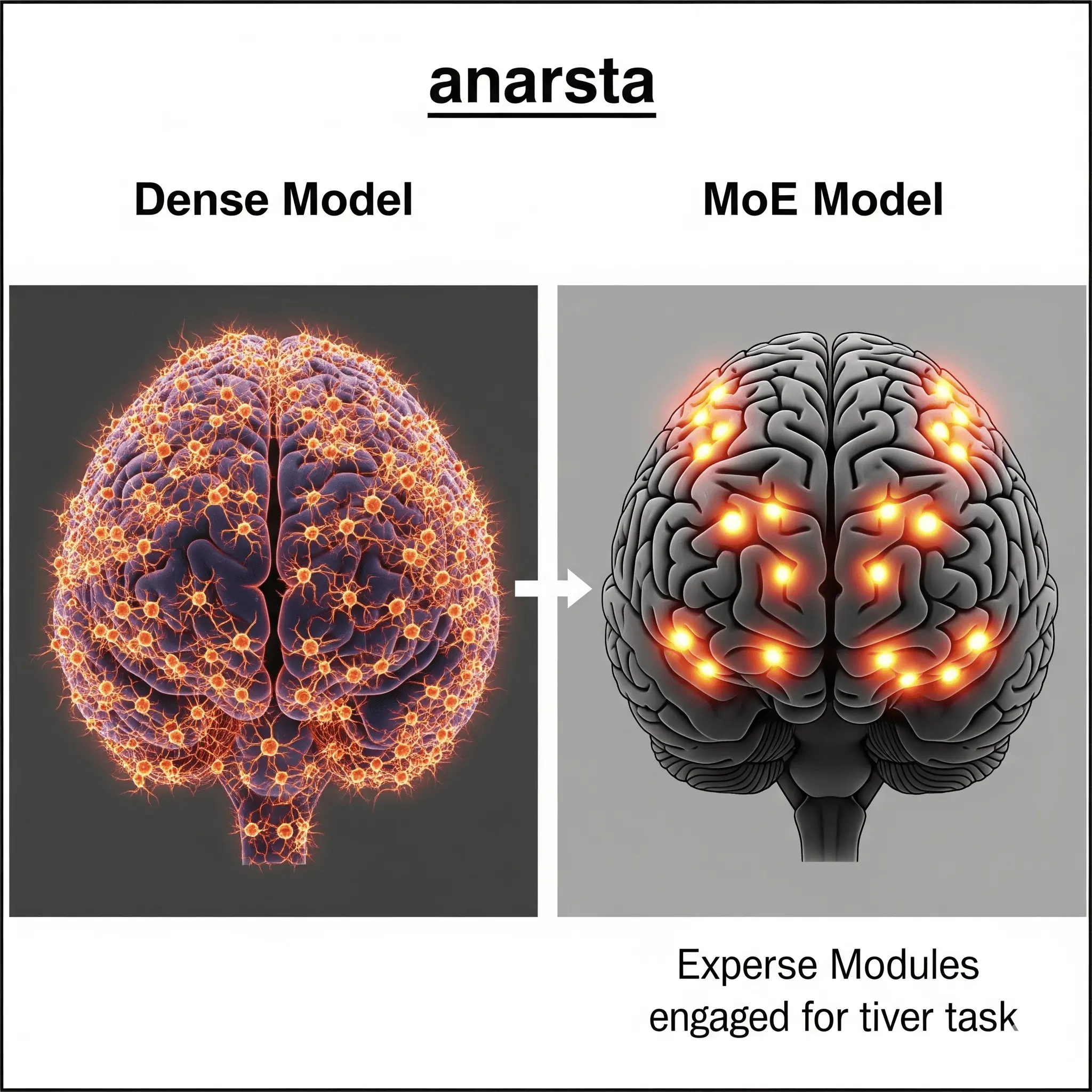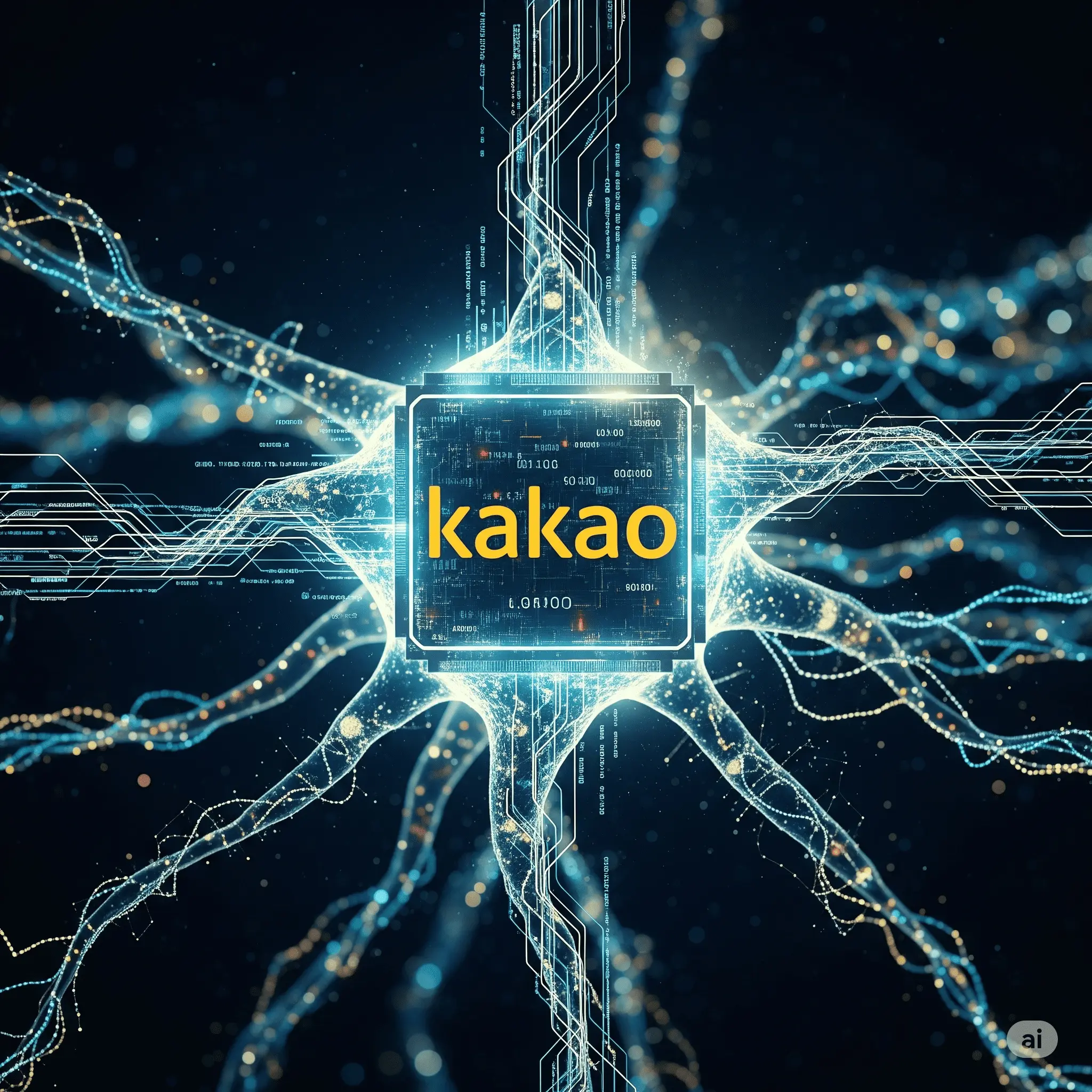In July 2025, a small earthquake shook the South Korean IT industry. Kakao made a surprise announcement, unveiling the latest models from its ambitious next-generation AI family, 'Kanana.' It was a profound statement of intent thrown down in an AI battlefield dominated by global Big Tech. This wasn't just a simple model update. It holds great significance because it presents a concrete blueprint of Kakao's AI strategy, armed with the sharp spears of 'cost-efficiency' and 'practicality,' and how its technology will transform our daily lives. Today, let's dive deep and uncover everything about the incredible 'Kanana.' 🕵️♂️
What is 'Kanana'? A New Era for Kakao AI
When most people think of Kakao's AI, they probably recall 'Ko-GPT' or the image generation model 'Karlo.' They're not wrong. These were the strong roots of Kakao's AI technology. However, 'Kanana' is the new shoot growing from these roots, an integrated brand that symbolizes the future of Kakao AI. While previous models focused on specific functions, Kanana is a model family born with the goal of creating 'practical and efficient AI that can be immediately applied to real services.'
Kakao's core philosophy for Kanana is twofold. First, 'cost-efficiency.' Running an AI model incurs astronomical costs. Kakao believed this cost issue had to be solved for everyone to enjoy the benefits of AI. So, instead of a single giant model, they focused on small but powerful 'lightweight models' and the resource-efficient 'MoE' architecture. Second, 'practicality.' It's a commitment to create AI that can innovate the user experience by being integrated into services like KakaoTalk or Daum right away, rather than just getting bogged down in benchmark score competition. Creating an AI that best understands the cultural, geographical, and linguistic nuances of Korea is also an extension of this practicality.
"It's not just an architectural upgrade; it's a crucial step toward product-level deployment and technological independence." – Kim Byung-hak, Head of Kanana Performance at Kakao
The AI with Eyes and Ears: Lightweight Multimodal Model 'Kanana-1.5-v-3b'
Among the newly released models, the undisputed star is 'Kanana-1.5-v-3b.' The name may seem complex, but the essence lies in two words: 'lightweight multimodal.' 'Multimodal' means it can understand and process various types of data simultaneously, not just text but also images, and sound. In short, it's an AI with eyes and ears. 😮
The 'lightweight' aspect of this model is also crucial. Its parameter size is around 3 billion (3B), which is much smaller than the hundreds of billions in global large-scale models. But don't underestimate it because of its size. Kakao maximized its performance through advanced training techniques like 'Reinforcement Learning from Human Feedback (RLHF)' and 'Knowledge Distillation,' which transfers knowledge from high-performance large models to smaller ones. As a result, its ability to understand Korean and English text within images is comparable to GPT-4o, and its performance in following specific instructions is reportedly 128% higher than other models of similar size.

This capability opens up endless possibilities. For instance, you could show Kanana a photo taken during your travels and ask, "What's the name of this building? Also, recommend a highly-rated cafe nearby." It would also be possible to show it a chart image full of complex data and request, "Summarize the key points of this chart and tell me the quarter with the most significant growth rate." Truly, AI is becoming a genuine 'assistant' that supplements our eyes and mind.
The Art of Efficiency: Korea's First MoE Model 'Kanana-1.5-15.7b-a3b'
Another star of the Kanana family is 'Kanana-1.5-15.7b-a3b,' the first 'Mixture-of-Experts (MoE)' model to be released in Korea. MoE is one of the hottest topics in the AI industry recently, and the fact that Kakao quickly adopted this technology and even made it open-source demonstrates its technological prowess.
An easy analogy for an MoE model is a 'team of top specialists in each field' versus 'one jack-of-all-trades who knows a little about everything.' A conventional 'dense' model uses its entire brain to find an answer to any question. However, an MoE model identifies the type of question and then wakes up only a few experts (sub-models) in that field to do the work. For example, a question about Joseon Dynasty history would activate the 'history expert' and 'language expert,' while a request to 'write Python code' would call on the 'coding expert.'

The biggest advantage of this method is undoubtedly 'efficiency.' Kakao's MoE model has a total of 15.7 billion parameters, but only about 3 billion are activated during inference. It can deliver excellent performance with far fewer computing resources relative to its total parameter size, drastically reducing the operational costs of AI services. This means opening the door for more companies and developers to utilize high-performance AI without a heavy financial burden.
Key Takeaway: Why MoE Matters
The Mixture-of-Experts (MoE) model is the key to unlocking the popularization of AI technology. Because it can deliver high performance at a low cost, it provides an opportunity for startups and individual developers to create high-quality AI services. Kakao's release of its MoE model will breathe great vitality into the entire domestic AI ecosystem.
How was Kanana Made? The Harmony of 'From Scratch' and 'Upcycling'
Another impressive aspect of Kakao's announcement was their development methodology. Kakao showcased both the ability to develop models 'From Scratch' and a clever strategy of 'Upcycling' existing models.
- From Scratch: The multimodal model 'Kanana-1.5-v-3b' was designed and developed from the ground up using purely Kakao's technology. This signifies 'technological independence' without reliance on external tech and proves that Kakao has the core competency to create AI foundation models.
- Upcycling: The MoE model was created by 'upcycling' the existing 3-billion-parameter 'Kanana-Nano' model. By replicating parts of the existing model's neural network and converting them into expert layers, they created a larger, more efficient model with far less time and cost than building one from scratch. This is a very smart and practical approach.
The harmony of these two strategies clearly shows the direction Kakao AI is heading. They are building a solid foundation by securing core technology internally, ensuring they are not swayed by anyone, while simultaneously creating practical value by constantly seeking efficient methods. 🚀
Where Does Kanana Stand in the Global AI War? (feat. GPT-4o, Gemini)
So, how competitive is Kanana in the global AI market? A direct comparison with giants like OpenAI's GPT-4o and Google's Gemini makes Kakao's strategy clearer.
| Feature | Kakao 'Kanana' | OpenAI 'GPT-4o' | Google 'Gemini 1.5 Pro' |
|---|---|---|---|
| Key Characteristics | Lightweight, MoE, Cost-Efficient, Korean-Specialized | Top-tier general performance, Fast response | Massive context window (1M tokens), Video understanding |
| Core Strategy | Practical service application, Optimized for specific markets (Korea), Open-source for ecosystem | Dominate the market with the most powerful general AI, API-based revenue | Seamless integration with Google ecosystem, massive data foundation |
| Strengths | High understanding of Korean culture/language, Low operating cost, Fast customization | Superior reasoning ability, Vast English data, Strong brand power | Processing long text/code/video, Synergy with Search |
| Release Policy | Some models like lightweight/MoE are Open-Source | Almost entirely Closed-Source | API access for some models, limited direct control |
As the table shows, Kakao has chosen the path of creating the 'most efficient and practical model' instead of competing to build the 'largest model.' Their strategy is not to create an AI that scores 100 on all questions, but one that provides a 120-point answer to the questions Korean users ask most frequently. This is like opening a specialized boutique for a specific clientele, rather than competing with a giant department store. The open-source policy, in particular, is part of a larger picture to build a Kakao-centric AI ecosystem by encouraging more developers to create new services using Kanana.
An AI Assistant in KakaoTalk? Kanana's Future and Our Daily Lives
So how will this smart and efficient Kanana change our lives? Kakao has announced plans to release the results of its 'reasoning model,' essential for implementing 'Agent AI,' in the second half of the year. Agent AI is an AI that not only answers questions but also sets plans and executes tasks on its own.
Just imagine typing this into a KakaoTalk chat: "Book a quiet Italian restaurant with a rating of 4.5 or higher near Gangnam Station for 4 people this Friday at 7 PM, and send a notification with the location and time to all attendees." This means a world where an AI assistant based on Kanana handles tasks that we currently have to do ourselves—searching, calling, and making announcements in group chats—is not far away.

The emergence of Kanana is more than just a technology announcement; it shows us the blueprint of the future that Kakao envisions. It's a world where AI is not a difficult technology used only by a special few, but a service as common as air, like KakaoTalk, used by everyone every day. It's time to watch with anticipation to see what impact Kakao's ambitious challenge will have on the global AI market beyond Korea, and how much more exciting it will make our lives.
